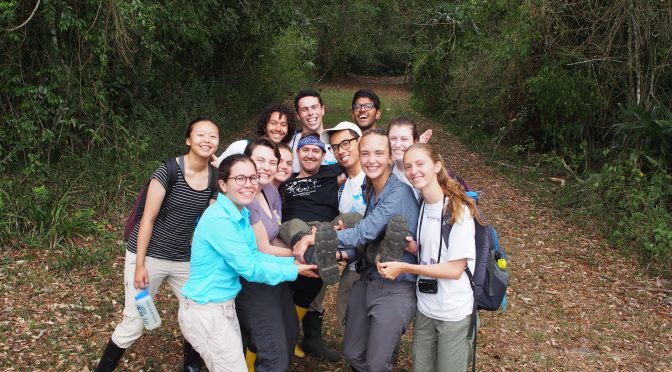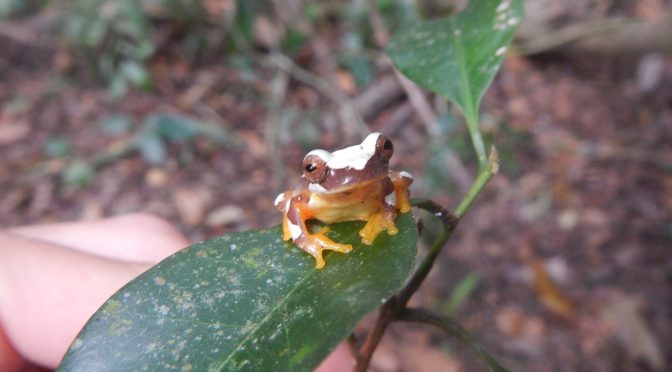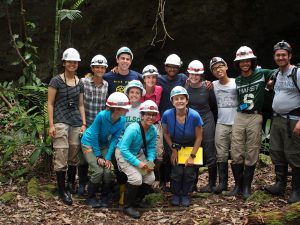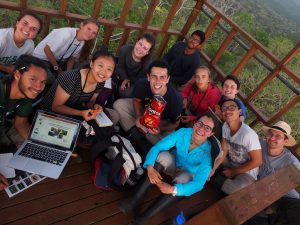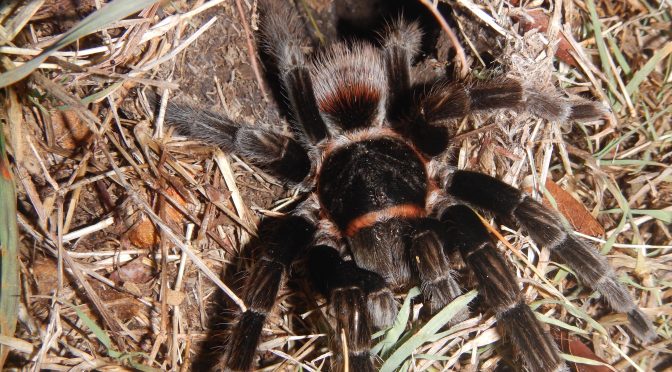Hi friends,
When we got to Las Cuevas, we were told that we won’t be able to do caving as the cave was closed for archaeology excavation. However, of course nothing deters Scott and he was able to arrange for us to visit the caves, albeit only the entrance of it.
We spent the morning collecting our vials that we placed in the forest the previous day. We then analyzed the data and made a poster for it. After lunch, we checked out the Las Cuevas caves. The entrance was beautiful and apparently the cave was used in the past as a sort of temple where Mayans go to undertake a spiritual journey. There were supposedly nine chambers in the cave, each leading to another through a small opening that requires crawling through. As the individual crawl through the opening, they were supposedly bowing in humility to the Mayan gods and I found that the engineering of the hole to achieve this effect was pretty cool.

We explored the caves and entered the first chamber which was completely dark when we turned off our headlamps. We took some time to soak in the atmosphere and it felt weird to be deprived of my most important sensory organ but at the same time it was quite calming too. We then had our daily taxon lectures in the cave chamber which was a fresh change of environment. On our way out, we saw a green snake which was slithering in and out of the holes in the cave and that was interesting too.
In the late afternoon, we went on a hike to the bird tower which wasn’t that long by distance but it was a steep climb. The tower was a sketchy simple tower that looked like construction scaffolding with a wooden platform on top. However on closer inspection, it looked pretty stable on the bottom which gave me a peace of mind. At the top of the tower, the view was spectacular! Pictures below:

We had a lecture by Therese at the top about her graduate research and it was interesting to listen to her stories of being in Gabon and the field work she had done there. The environment was also great for the lecture and the sun was setting as she spoke which hilariously made it look like she talked for a really long time. On the way back to the camp, some of the group saw a Desmarest’s Spiny Pocket Mouse (Heteromys desmarestianus) which escaped before I could take a look at it. That’s all I have for today.
Till tomorrow,
Damien








